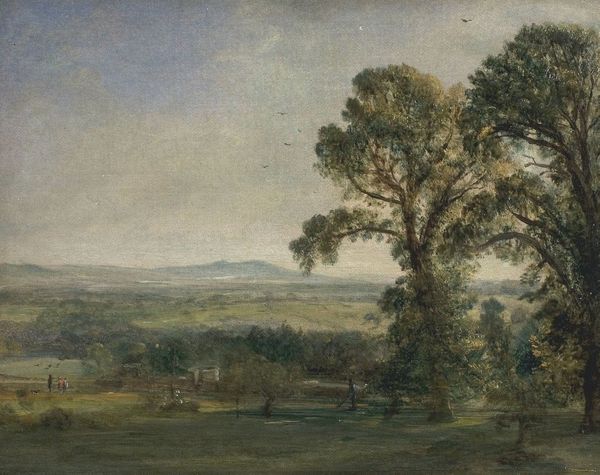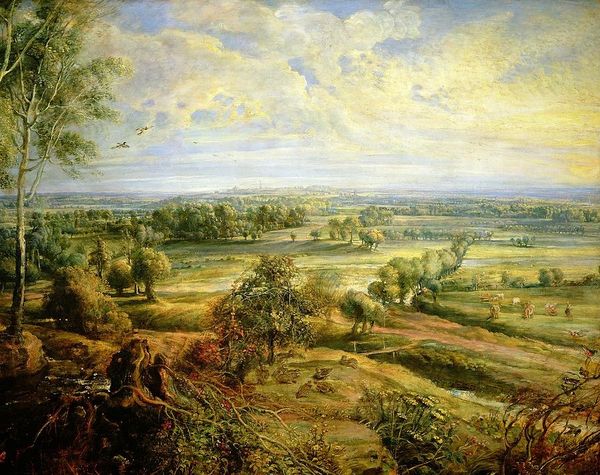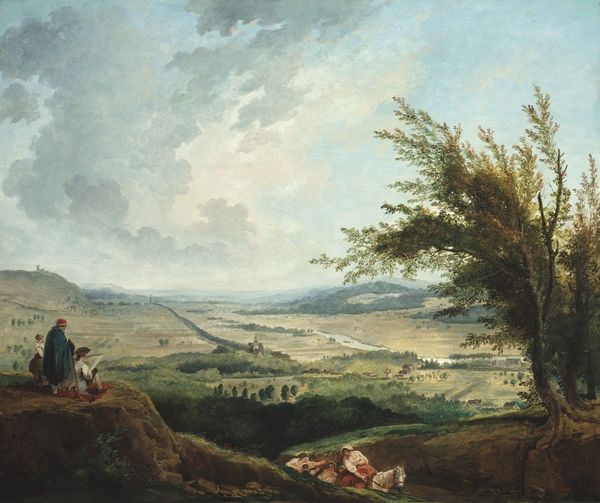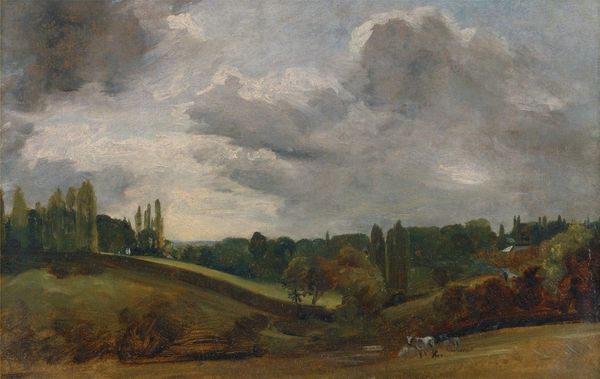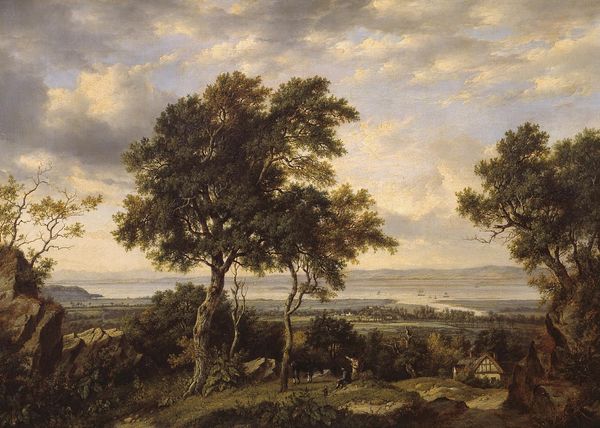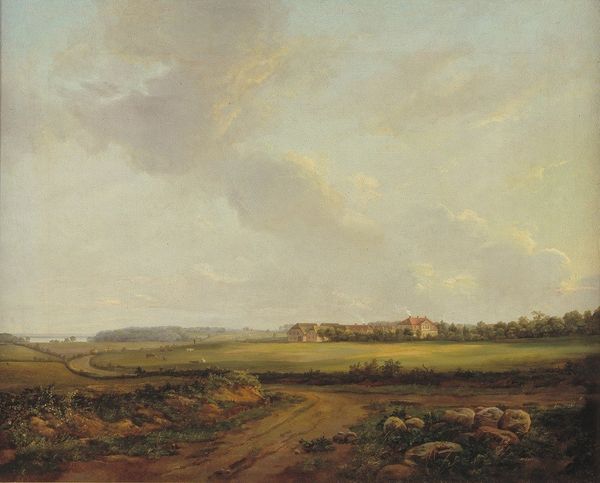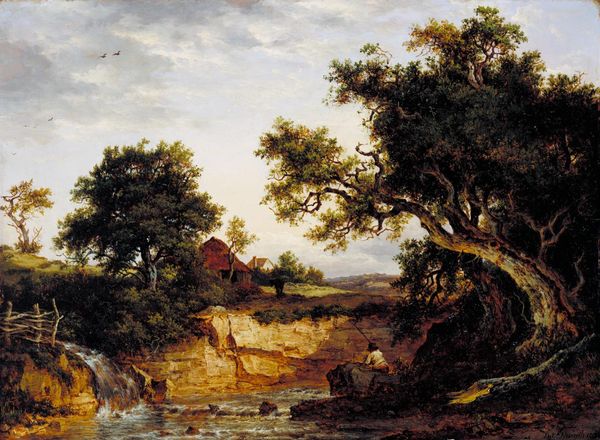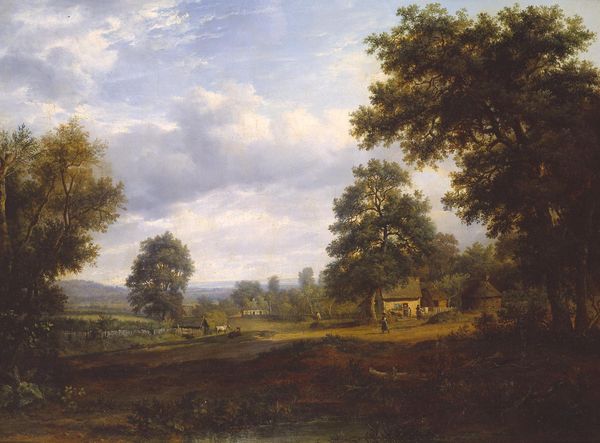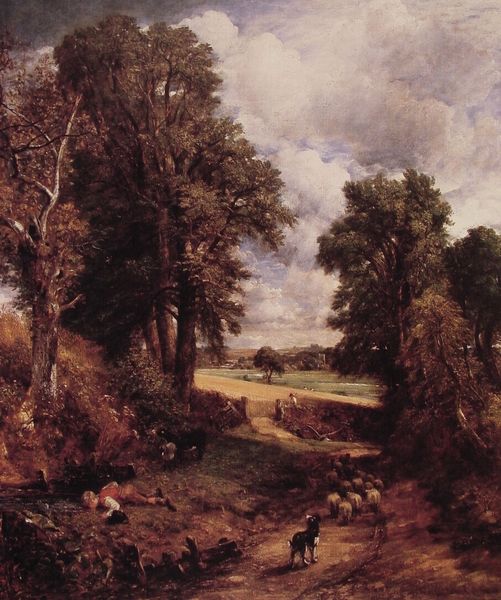
painting, oil-paint
#
painting
#
oil-paint
#
landscape
#
oil painting
#
romanticism
#
cityscape
#
realism
Copyright: Public Domain: Artvee
Curator: Here we see John Constable's "The Vale of Dedham," an oil painting capturing an expansive view across the English countryside. It’s quite remarkable, really. Editor: My first thought? The sheer volume of cloud pressing down on the landscape—a bit ominous, but it gives the vista an almost epic quality. Curator: Indeed. Constable had a deep fascination with capturing cloud formations. He saw them as integral to understanding a specific place and moment in time. Think of how frequently clouds appear in Dutch Golden Age landscape paintings as metaphors for fate or divine power. Editor: It definitely resonates with that tradition! There's something about the Romantic era’s emphasis on the sublime, particularly in depictions of nature. In these idyllic representations we can trace themes of the enclosure movement and its profound impacts on rural communities. Constable paints as though such events had no real effect. Curator: That's a fair point. But the towering church steeple visible in the distance, amidst all the foliage, might also be read as something more symbolic. Churches often signified stability, community, a steadfast point in an ever-changing world. It offers a source of social reassurance. Editor: Reassurance for whom? The perspective seems decidedly from the landed gentry. The working classes who tilled these fields likely had a different perspective. What's absent is crucial—there are very few laborers visible; the fields appear cultivated yet unpopulated. Is this a depiction of idealized life or erasure? Curator: Possibly both. These landscapes often became charged sites. The presence of that central church offers a sense of continuity—a sign of older traditions holding firm. What does that cultural memory mean here, though? Editor: Perhaps memory becomes another form of romanticizing a specific past, obscuring more immediate injustices, economic upheavals. Art invites dialogue and challenges us to confront what we see—and, importantly, what's been deliberately excluded from view. Curator: It’s interesting to consider what visual shorthand stays lodged in collective memory and why. Editor: Yes. Let's keep looking beneath the surface, shall we? There’s always another layer to uncover.
Comments
No comments
Be the first to comment and join the conversation on the ultimate creative platform.

